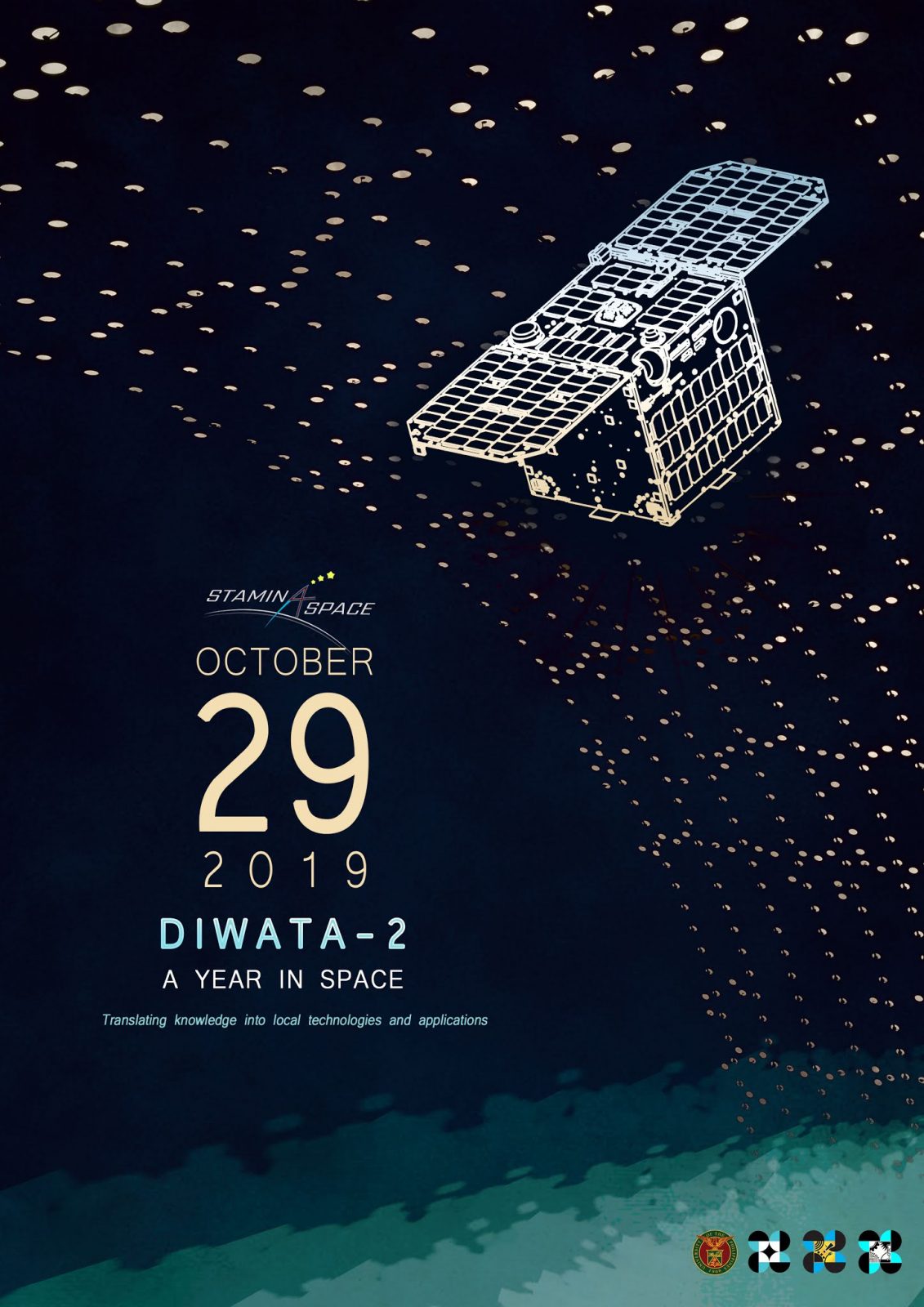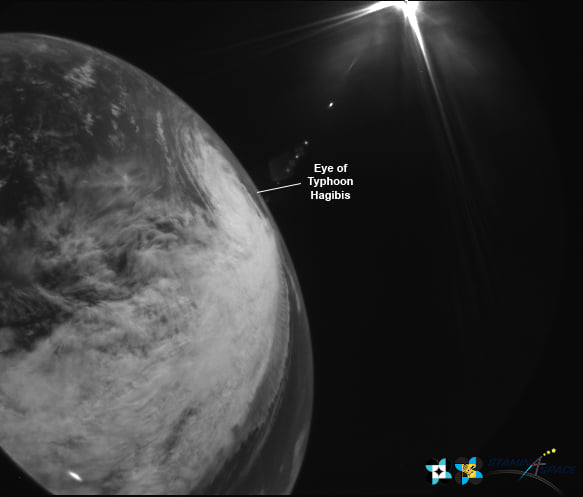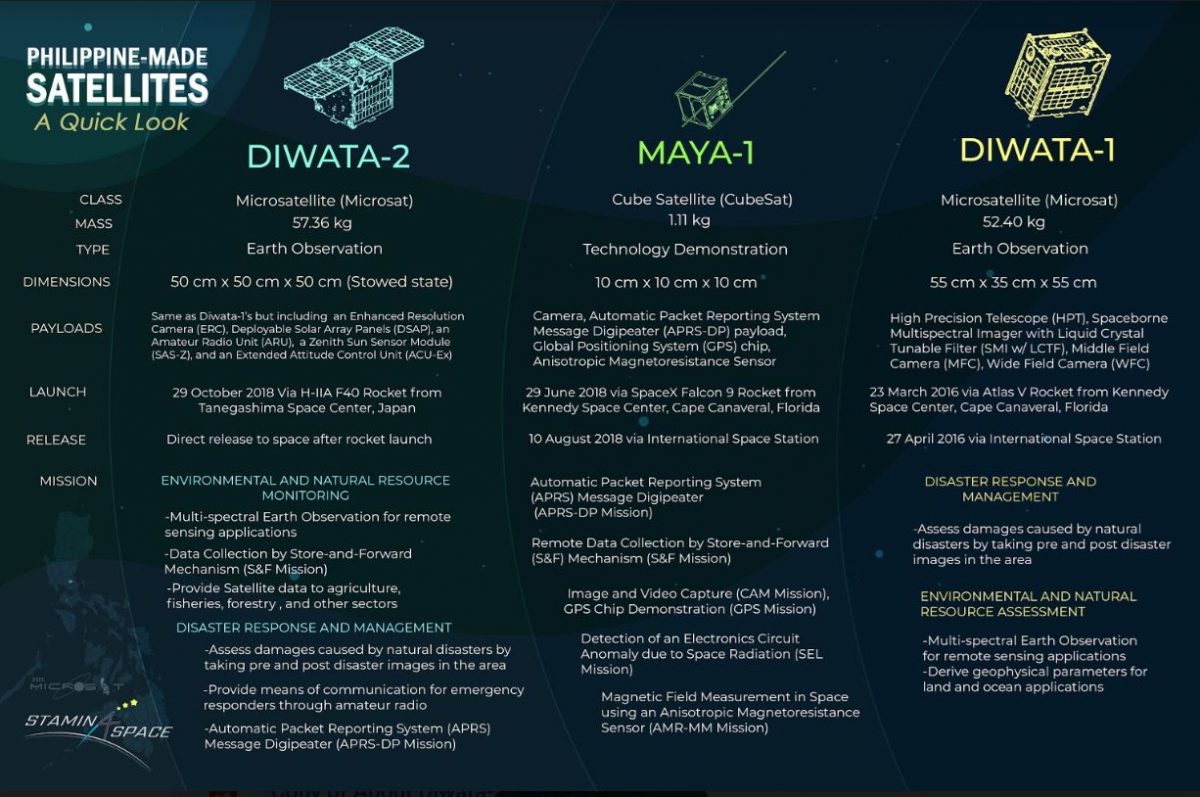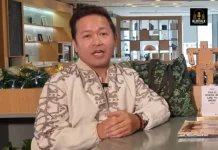
As the Philippines marked the 1st anniversary of microsatellite Diwata-2’s journey in space, the scientists behind the historic space technology gathered at the University of the Philippines Diliman to share stories of its milestones.
The UP College of Engineering Electrical and Electronics Engineering Institute (UP-EEEI) hosted the anniversary gathering on October 29, 2019, with the scientists of the Philippines’ microsatellite program excitedly sharing with everybody the status and operation updates on Diwata-2, an Earth-observing microsatellite capable of capturing images of the Earth for environmental assessment.
WHAT IS DIWATA-2
Diwata-2, a 50-kilogram “Cube” Earth Observation Satellite built by a team from the UP and the Advanced Science and Technology Institute of the Department of Science and Technology (DOST-ASTI) in cooperation with Tohoku University and Hokkaido University in Japan, was launched using Japan rockets from Tanegashima Space Center on October 29, 2018.
Diwata-2 is the Philippines’ third satellite sent to space, following the 50-kg. microsatellite Diwata-1 (deployed to space April 27, 2016) and the 1-kg nanosatellite Maya-1 (deployed on June 29, 2018). Diwata-1’s images were hailed among the world’s best images from a microsat.
Development of the microsatellite began under the research program, “Development of the Philippines Scientific Earth Observation Microsatellite (PHL-Microsat)” and was completed under the “Space Technology & Applications Mastery, Innovation, and Advancement (STAMINA4Space)” program, which continues to operate the microsatellite along with its predecessor, Diwata-1. Both programs are funded by the DOST Grants-in-Aid (DOST-GIA) and monitored by DOST’s Philippine Council for Industry, Energy and Emerging Technology Research and Development (PCIEERD).
Diwata-2 is primarily intended to conduct scientific measurements and experiments for environmental monitoring and assessment. It also includes monitoring of weather disturbances like typhoons which can be carried out by its on-board cameras. Another function is its image data collection and monitoring. In its first year in space, Diwata-2 has acquired images covering 46.06% of the Philippines.

ONE YEAR IN SPACE
The anniversary event at the UP Diliman chose the theme “Translating Knowledge into Local Technologies and Applications” as speakers shared about the value of Diwata-2 and the Philippine microsatellites.
Shielo Namuco, a university researcher for STAMINA4Space explained that the satellite’s ability to collect images and monitor turbidity levels helped the rehabilitation of the Manila Bay.
Diwata-2 satellite images can lead to proper assessment, evaluation, and management of land cover and use, as in the case of satellite images from Rizal compared to Google Maps showing the conversion of agricultural areas into residential areas and roads.
EMERGENCY COMMUNICATION CAPABILITIES
Joel Marciano Jr., acting director of DOST-ASTI, proudly pointed out the small but powerful computer-controlled system is capable of other tasks.
“These satellites are beyond taking pictures,” explained Marciano. “They’re also viable communication devices. In the context of the Philippines, in cases of emergencies and disasters, this can provide a ready solution.”
The scientists explained that the amateur radio unit in the satellite can be used as an alternative communication platform in case of breakdown of the communication line in the event of calamities like super typhoons and powerful earthquakes.

MORE SATELLITES
The Philippines hopes to send 10 more satellites into space. Four of the Cube satellites will be developed by the University of the Philippines graduate students while the rest by Filipino Scientists and engineers from abroad facilitated by partner countries.
This development coincides with the creation of the much-awaited Philippine Space Agency that will pave the way to more awareness, education, and interests in the field, international cooperation, space research for national security and development, hazard management and climate studies, space research and development, space industry capacity-building.
Namuco pointed out that Diwata-2 also provides “created opportunities for learning”, providing a powerful tool for students and government agencies to learn its capabilities and to help broaden their knowledge through training and visits to the microsatellite program’s facilities.
Enrico Paringit, executive director of DOST’s Philippine Council for Industry, Energy and Emerging Technology Research and Development (PCIEERD), also talked about the shifting trend from a resource-based to a knowledge-based economy.
“Even if we still need to harness our natural resources, a crucial part of that will be to harness these technologies in order to utilize our precious resources in a sustainable manner,” said Paringit.
The Philippines would greatly benefit from the utilization of more satellites. In fact, satellites have provided countless advantages for countries all over the world for decades. The satellites provide data and much-needed information to farmers and fishermen that help increase their productivity. They can also help the government to plan and monitor urban development, especially with regards to environmental and forest revitalization and management.
CHECK OUT the Oct 29, 2018 launch of Diwata-2 streamed live.
The University of the Philippines continues to pioneer in space technology education for the Philippines as it hosts the UP ULyS3ES home for Filipino space scientists, engineers, and technology research. It also offers space technology scholarships.
SEND congratulations in the comments below to the team of Filipino scientists and STAMINA4Space educators behind the Philippine microsatellite program!
Like, Follow, Subscribe to GoodNewsPilipinas.com Facebook, Twitter, Instagram, Good News Pilipinas! TV on YouTube, new story notifications and e-mail newsletters for updates on more Filipino Pride stories.










